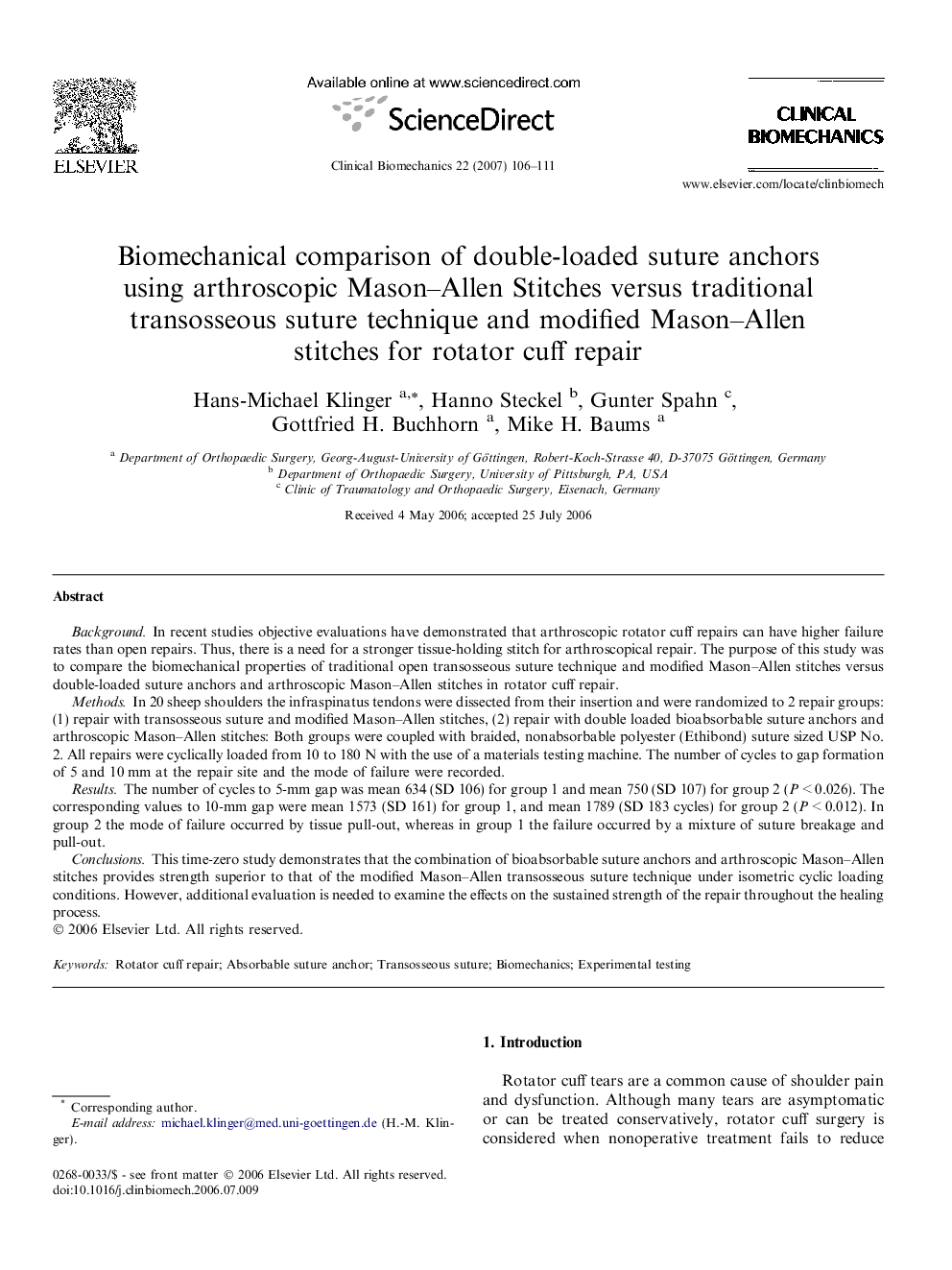| Article ID | Journal | Published Year | Pages | File Type |
|---|---|---|---|---|
| 4051799 | Clinical Biomechanics | 2007 | 6 Pages |
BackgroundIn recent studies objective evaluations have demonstrated that arthroscopic rotator cuff repairs can have higher failure rates than open repairs. Thus, there is a need for a stronger tissue-holding stitch for arthroscopical repair. The purpose of this study was to compare the biomechanical properties of traditional open transosseous suture technique and modified Mason–Allen stitches versus double-loaded suture anchors and arthroscopic Mason–Allen stitches in rotator cuff repair.MethodsIn 20 sheep shoulders the infraspinatus tendons were dissected from their insertion and were randomized to 2 repair groups: (1) repair with transosseous suture and modified Mason–Allen stitches, (2) repair with double loaded bioabsorbable suture anchors and arthroscopic Mason–Allen stitches: Both groups were coupled with braided, nonabsorbable polyester (Ethibond) suture sized USP No. 2. All repairs were cyclically loaded from 10 to 180 N with the use of a materials testing machine. The number of cycles to gap formation of 5 and 10 mm at the repair site and the mode of failure were recorded.ResultsThe number of cycles to 5-mm gap was mean 634 (SD 106) for group 1 and mean 750 (SD 107) for group 2 (P < 0.026). The corresponding values to 10-mm gap were mean 1573 (SD 161) for group 1, and mean 1789 (SD 183 cycles) for group 2 (P < 0.012). In group 2 the mode of failure occurred by tissue pull-out, whereas in group 1 the failure occurred by a mixture of suture breakage and pull-out.ConclusionsThis time-zero study demonstrates that the combination of bioabsorbable suture anchors and arthroscopic Mason–Allen stitches provides strength superior to that of the modified Mason–Allen transosseous suture technique under isometric cyclic loading conditions. However, additional evaluation is needed to examine the effects on the sustained strength of the repair throughout the healing process.
